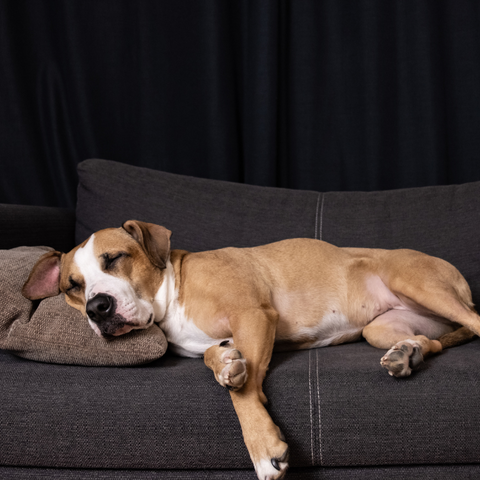
Separation Anxiety in Dogs and Puppies: What It Is & How to Cope With It
Share
Many dogs, when they see their people getting ready to leave the house or when there is a major change in their daily routine, feel intense anxiety . We have all seen, for example, a puppy that barks or cries loudly when it sees its master open the door to go out.
Sure, it's endearing to know that your dog loves you so much and wants to be around you, but if this is causing separation anxiety, it's a good idea to address it. Otherwise, you will have a dog with behavioral problems and severe mental distress.
SEE KIND OF PEACE
The good news is that with the right moves, you can help your dog feel comfortable and safe, even when you're away.
What is separation anxiety in dogs?
Separation anxiety is quite similar to panic attacks in humans. Although it's normal for young dogs to experience quite a bit of stress when adjusting to a new environment, behaviors such as urinating or defecating on the floor and whining or crying when left alone may indicate that so-called separation anxiety is building up. .
This is especially true if the adjustment period has passed and even though you have invested in positive training techniques.
The most common signs of separation anxiety in dogs are:
- Panting
- Scratching on doors and windows
- Constant barking or howling
- Urinating and defecating inside the house
- Excessive licking or biting of the body
- Vomiting and diarrhea
- Attempting to escape from home at the point of injury.
Causes of separation anxiety in dogs and puppies
Although there is no definitive answer as to why some dogs develop separation anxiety and others do not, several factors contribute to this behavior.
For many dogs, lack of early socialization is a cause of separation anxiety, as they are overly attached to their human.
A major change , such as the death of a family member or a move to another house, can also create intense stress in the dog resulting in unwanted behaviors.
Even an illness that can make the dog feel weak or in pain contributes to this condition. In any case, it is best to contact the vet, unless there is another obvious reason.

How to help your dog cope with separation anxiety
- Create a safe space : In the crate the dog can feel safe and secure, as long as you create positive associations. Do not force your dog to come inside. Fill the crate with treats and dog toys and leave the door open for him to enter at will. Gradually, the dog will begin to associate the crate with a calm and safe environment where he can relax when he is alone.
- Train the dog on separations : Start by going away for a short period of time, such as leaving the house and taking out the trash. In general, it's a good idea not to make goodbyes dramatic with lots of hugs. When you get home, as long as the puppy shows a calm demeanor, you should reward it with a treat and praise.
- See a professional trainer : If the situation is serious, then the trainer will help you create a routine designed to reduce your dog's stress. It's important to learn how to adjust your behavior to avoid exacerbating your loyal friend's discomfort.
- Use a pet camera : Using a home camera for the hours you're away will help you better determine what your dog's specific stress triggers are, how he reacts when you're away, and what calms him down. With this information, you will be better prepared to create a safe and calm environment during your absence.
- Calming devices can help : These are devices that emit pheromones, which make animals feel calm, thus helping to acclimatize to an environment, changes and absences. Chewable treats that occupy your four-legged friend for a while can also be helpful.
However, the combination of all the above methods and of course the advice of the vet can work wonders and soon you will have a dog full of joy and self-confidence!




